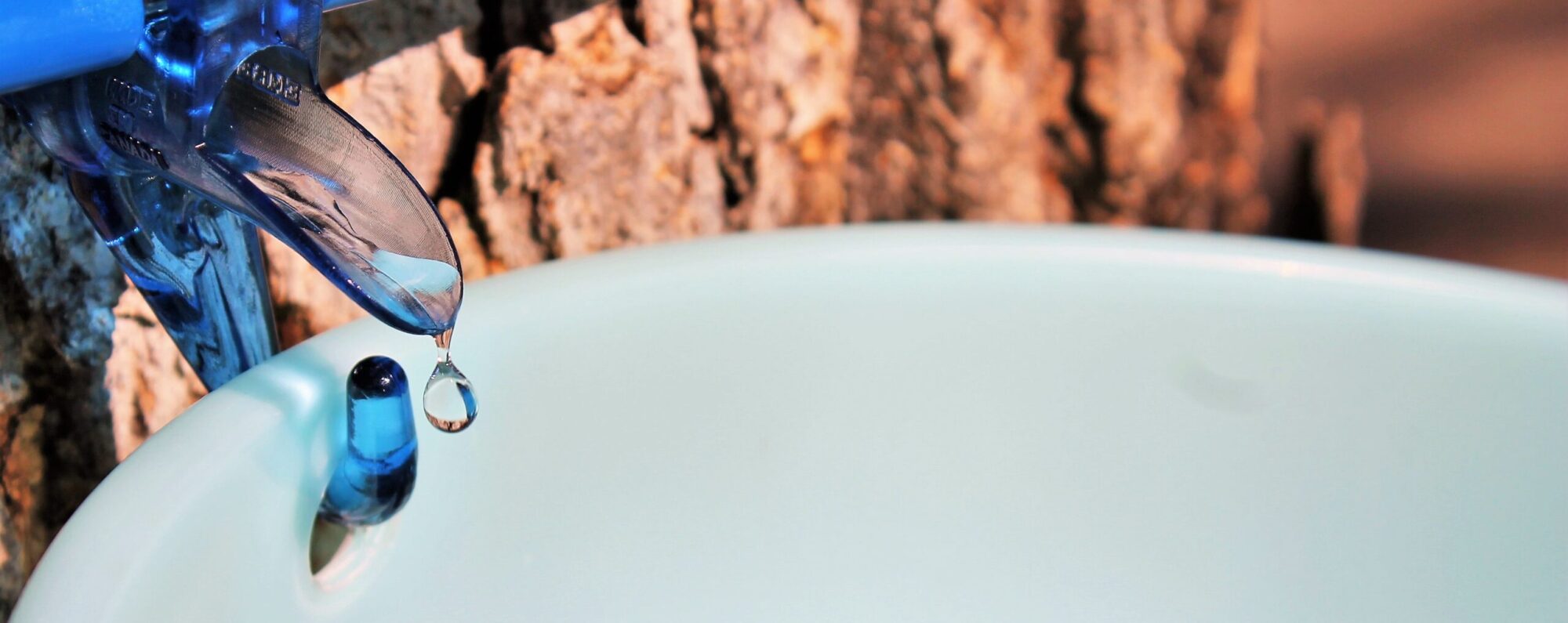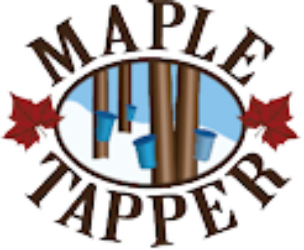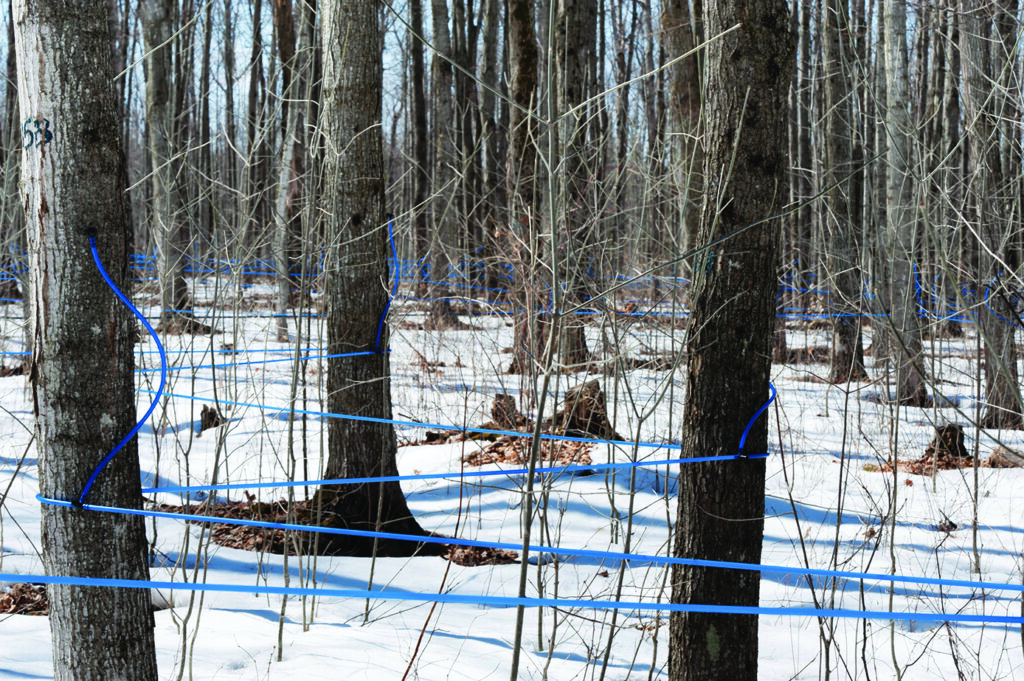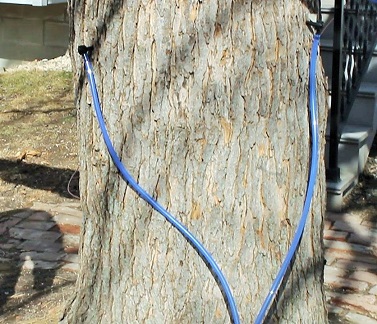
For those of you who’ve made it through one season, the natural second season question is: how can I get more syrup? Well, as you’ve probably already guessed, you can only get more syrup by collecting more sap. So, now what? Before you run out and buy 40 acres, here’s a few suggestions that you might be able to put into use this year:
#1. Put more taps in each tree. Most mature trees can handle more than one tap – see the chart below for size needs – measure the diameter at about 4 ½’ above ground level to determine how many taps to use but never use more than 6 taps per tree. Using tubing is a great time saver as you can thread more than one tube into each bucket. (Our Deluxe Kit comes with 20 taps and tubes which should help out with this step! Order here, shipping is free!)
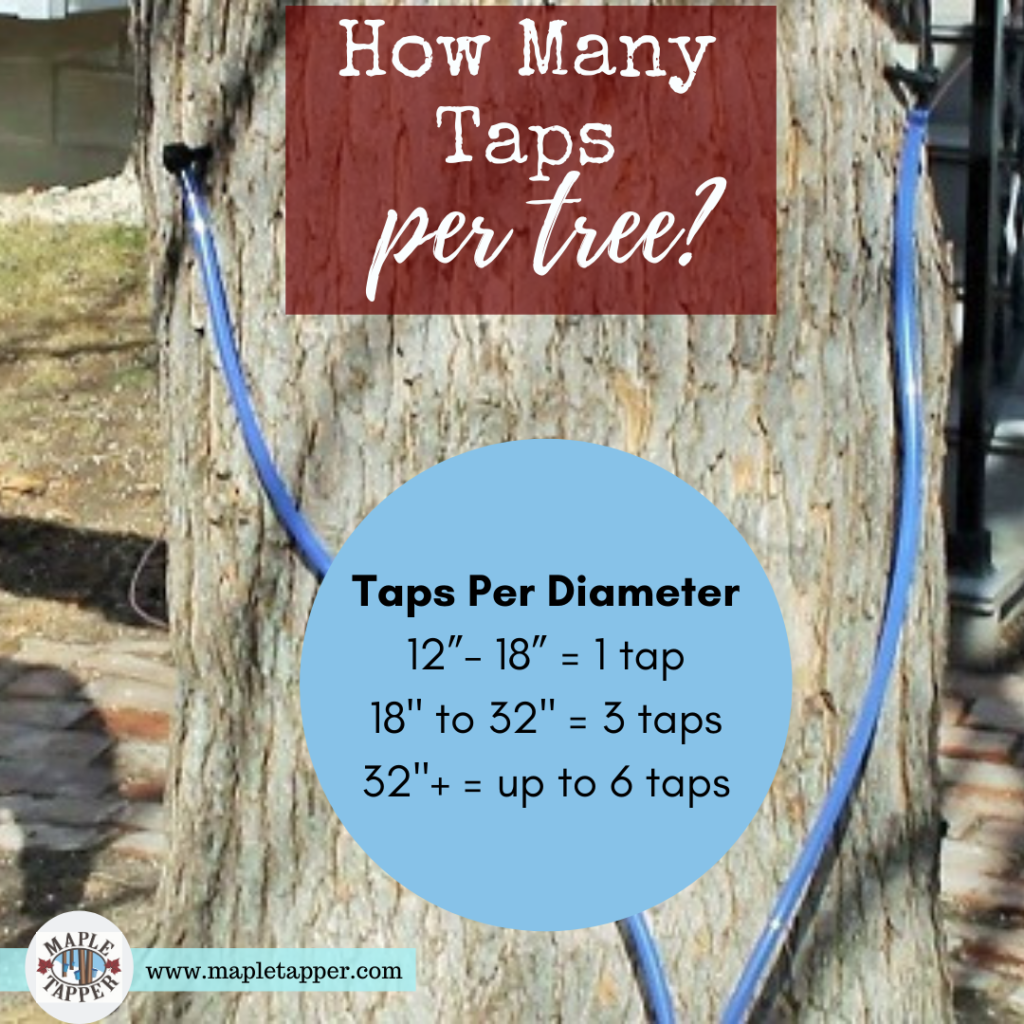
#2. Try other non-sugar maple trees. Every tree has some “sugar” in its sap but not all of this sap is as delicious or as high in sugar content as maple sap. Favorites include birch, black walnut, sycamore, and other maple family trees such as box elder, silver maple, or red maple. Because the sugar content is lower, it takes a lot more sap to make equivalent syrup amounts (for instance, with birch you can expect a nearly 100 to 1 sap-to-syrup yield).
Non-sugar maple syrup can be an acquired taste with descriptions ranging from wild-tasting to bitter to earthy, expect something different if you decide to try making syrup from one of these trees. Of course if it tastes good to you and you’re willing to put in the time, then it’s a worthwhile endeavor! Each variety will have a different flavor, color, and sweetness; the seasons are generally the same; and the process of tapping, collecting, filtering, and syrup making is similar to maple tapping. Our book included with every kit thoroughly explains the intricacies of each tree (or you can order the book separately through our website).
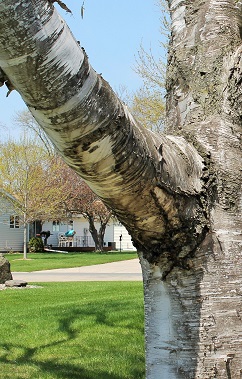
#3 Pool your efforts with other sugarmakers. This may not net you a lot more syrup but we firmly believe that many hands make light work especially when it comes to boiling sap. Maybe you have a great evaporator set up with lots of fuel but not as many trees as you’d like and your neighbor has tons of trees but no cooker. If you pool your resources you’ll save time cooking and probably end up with a little more syrup than if you worked alone. Plus it’s just fun to have a partner in crime!
